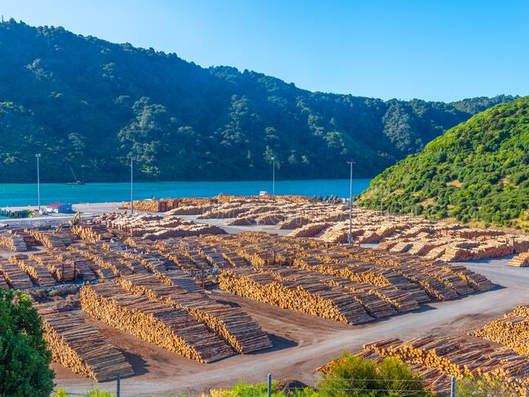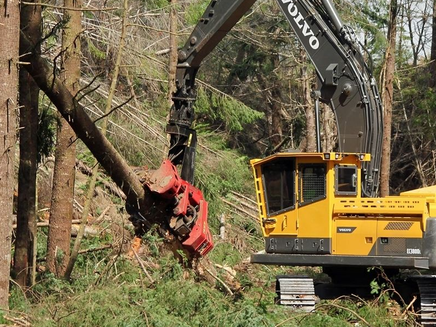The New Zealand government website reported on November 30, 2022 that the New Zealand Forestry Minister Stuart Nash said on the same day that the "Forestry and Wood Processing Industry Transformation Plan" (ITP) launched by the government will promote the development of New Zealand's forestry and wood processing industry to a high value-added, low-carbon and sustainable industry. The ITP has been developed in close collaboration between government and industry to enhance the value and futureproof capabilities of New Zealand's forestry sector and provide New Zealanders with better economic security during the global economic downturn.
新西兰政府网站2022年11月30日报道,新西兰林业部长斯图尔特·纳什于当日表示,政府推出的“林业和木材加工业转型计划”(ITP)将促进新西兰林业和木材加工业向高附加值、低碳、可持续的产业发展。ITP是基于政府与行业的密切合作而制定开发的,旨在提升新西兰林业部门的价值和面向未来的能力,在全球经济低迷时期为新西兰人提供更好的经济保障。

The ITP will launch a series of initiatives from 2023, including:
(a) Implement a programme to increase the diversification of non-radiative pine species in New Zealand;
2. Establish the first institution in New Zealand with the qualification of training graduate students in wood processing;
3. Expand the "Wood - Our Low Carbon Future" campaign to promote the benefits of using indigenous logs to produce low carbon products;
(4) Study how to increase the use of wood products through improved standards and demonstrate the benefits of carbon storage in wood products;
5. Promote and support the commercialization of biological products;
6. Support Maori forestry strategies. The New Zealand Government will allocate S $27 million (approximately US $16.98 million) from the budget to support the implementation of the ITP, with a further S $155 million (approximately US $97 million) earmarked to support ITP-related initiatives and projects.
ITP将从2023年起推出一系列举措,具体包括:
1、实施一项旨在提升新西兰非辐射松树种的种植和加工多样化的计划;
2、建立新西兰首家具备培养木材加工专业研究生资格的机构;
3、扩大“木材——我们的低碳未来”运动的规模,以宣传利用本土原木生产低碳产品的益处;
4、研究如何通过改进标准增加木制品的使用,以及展现木制品碳储存的益处;
5、推广支持生物产品商业化;
6、为毛利人的林业战略提供支持。新西兰政府将从财政预算中划拨2700万新元(约1698万美元)用于支持ITP实施,另有1.55亿新元(约0.97亿美元)专款用于支持与ITP相关的举措和项目。
The New Zealand forestry and wood processing industry generates billions of dollars each year. Since 2017, the industry has seen a 22% increase in exports to around S $6.6 billion (US $4.15 billion) in 2021, employing more than 35,000 people in the local community. New Zealand is currently the world's largest exporter of softwood logs, with about 60% of its forest products exported in the form of logs. The ITP lays the foundation for future export growth in the industry. It is expected that by 2030, the processing capacity of the New Zealand wood processing industry is expected to increase by 25%, reaching 3.5 million cubic meters; Increase the use of domestic wood in buildings by 25% by 2030; By 2040, exports of high value-added wood products will increase by S $600 million (about US $380 million).
新西兰林业和木材加工行业每年创造数十亿新元。2017年以来,该行业出口额增长了22%,2021年出口额约66亿新元(约41.5亿美元),在当地社区雇用超过3.5万名员工。新西兰目前是世界上最大的针叶材原木出口国,大约60%的林产品以原木的形式出口。ITP为该行业未来的出口增长奠定了基础。预计到2030年,新西兰木材加工行业加工能力有望增加25%,达到350万立方米;到2030年,将国内木材在建筑中的使用量增加25%;到2040年,高附加值木制品的出口额增加6亿新元(约3.8亿美元)。

ITP will also support the development of new products for the use of wood in high-tech, low-carbon products, such as building materials, including wood frames, fence panels and decorative panels, as well as biological materials such as liquid and solid fuels. New Zealand will develop a woody biomass industry to turn wood processing residues such as twigs, bark, wood chips and sawdust into particleboard or bio-pellet fuel. These will create more jobs and improve the sustainability of New Zealand's forestry industry.
ITP还将支持开发新产品,将木材应用于高科技低碳产品,例如建筑材料,包括木框架、栅栏板和装饰板,以及液体和固体燃料等生物材料。新西兰将发展木质生物质产业,将树枝、树皮、木片和锯末等木材加工剩余物制成刨花板或生物颗粒燃料。这些都将创造更多就业机会并提升新西兰林业的可持续发展水平。
